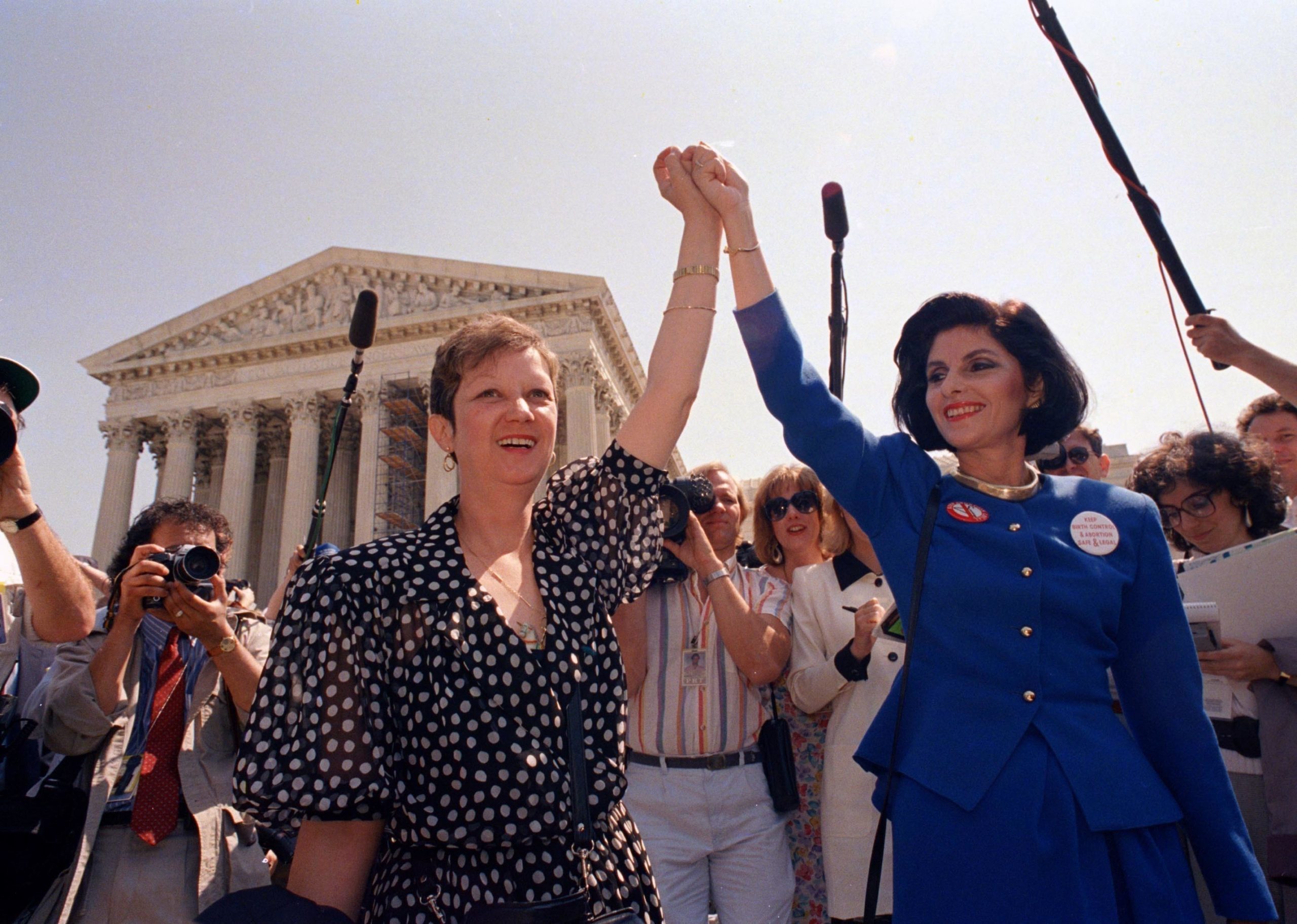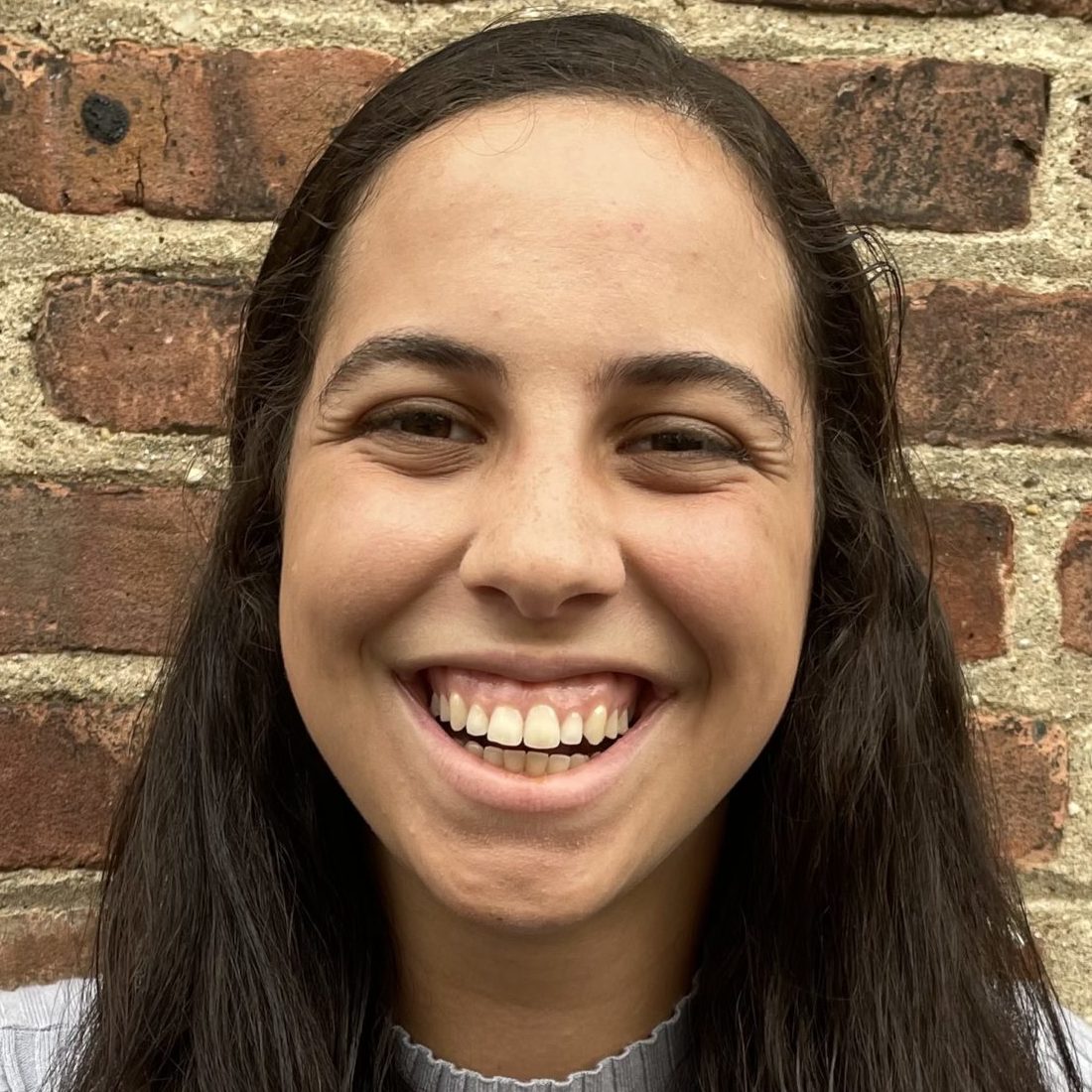
Norma McCorvey, better known as Jane Roe in the 1973 court case Roe v. Wade, left, and her attorney Gloria Allred hold hands as they leave the Supreme Court building in 1989. In "The Family Roe," Joshua Prager shines a new light on McCorvey's life and legacy
Joshua Prager, NF ’11, has made a career of sharing secrets. In one case, the former Wall Street Journal writer revealed the identity of the only anonymous Pulitzer Prize winner; in another, he exposed how the New York Giants cheated their way into the 1951 World Series. His newest book, “The Family Roe: An American Story,” ventures to uncover another hidden story, this time of the woman behind the Supreme Court’s landmark decision on abortion, Roe v. Wade. Through hundreds of hours of interviews with Norma McCorvey — more widely recognized by her pseudonym, Jane Roe — and over a decade of research, Prager narrates in great detail McCorvey’s unwanted pregnancy, her oscillating presence in both the pro-choice and pro-life movements, and her complex role as the face of Roe. And for the first time, the public hears from McCorvey’s three daughters, including the “Roe baby,” with whom McCorvey was pregnant during the Roe trial.
Nieman Reports spoke with Prager about his research for “The Family Roe,” his relationship with McCorvey and her daughters, and the future of abortion in the U.S. This interview has been condensed and edited for clarity.
Nieman Reports: At what point did you realize you had to talk to Norma McCorvey? What was it like meeting her and maintaining a relationship with her afterward?
Prager: I spent the last four years of her life with her. I was actually with Norma when she passed away in 2017. She was an incredibly difficult person. She had major swings of emotion. One minute, you would receive a beautiful text message from her that was joking and funny and reverent. Then minutes later, you could receive an email from her or text message, saying horrible things to you. I just came to understand that’s what it meant to know Norma. And in my book, I write about how over and again, she struck out, lashed out at the people who treated her well and who had her best interests in mind. She was, in the end, very happy that I was writing this book. She wanted to separate fact from fiction, a lot of the myths that had been pinned to her life. She herself had lied endlessly about her life, and I think she wanted help teasing out what actually happened from what didn’t happen. She was a very active participant in this book. She would call me if something came to her mind. Over those four years that we worked together, I would characterize our relationship as good, and one marked by cooperation. I was thankful that she was helping me to write her story, that she was thankful that I was helping her to figure out what really happened in her life.
What was the process of gaining the trust of people, like Norma and her daughters, who have lived relatively private lives up until this moment?
My book took me 11 years, and time was an enormous part of this. When I reached out to Shelley [the Roe baby], she said that she didn’t want to speak with me, and she said that in no uncertain terms. I told her, “Okay, I will never write about you against your wishes.” Little by little, she opened up and told me her remarkable story, a person whose life was really intimately involved in this thing that tens of millions of Americans cared about, and yet that was an enormous burden. She wanted to be rid of her secret, but she was also deathly afraid of revealing it. She also hated being seen as a symbol by the pro-life community. She wanted no part of that, even though her own feelings about abortion were sort of complicated and she was somewhat ambivalent about it. She didn’t like that she was not seen as Shelley Thornton, but rather was seen as the Roe baby. These were things that I made clear to her that I understood and would write about with real nuance and complexity. I think I was true to that. They [Norma and her three daughters] spoke to me, I think, because they knew that ultimately, I was going to write about them fairly. And I did I have an opinion about abortion. I am pro-choice, and I mentioned that in my authors note. But I did not write this book as an advocate — I wrote it as a journalist. What motivated me above all was being honest and fair, and treating my subjects with empathy.
You mentioned that Norma was difficult and complex and lied frequently. How did you navigate reporting truthfully with a subject who was often an unreliable narrator?
She was reliably unreliable. Everything she said — I mean, almost everything she had said publicly about her life — was a lie. It was nuts. What I came to realize was that there was an underlying logic to her lies, or an underlying motivation for her lies, in that they all helped Norma reimagine herself as not a sinner, but as a victim. When I understood what was motivating her, that was very helpful. The way I was able to always confirm these things, there were three ways that would be familiar to any journalist. The first was that I found these documents, these papers, and there would be names in there, and dates, and they were hard facts that I could combat [against Norma’s lies]. I always went back to sort of the earliest thing that Norma said. And the third thing was always finding sort of reliable witnesses who had been at her side for her life. Norma would laugh and say, “Well, I prefer my version.” But she knew what I was doing, getting it all down correctly on paper. And she helped me to do that.
You write about Roe using the lived experiences of Norma and her daughters. How do you see this personal lens offering us a window into the political conversations we’re having about abortion today?
[“The Family Roe”] refers to two different families. There’s the immediate family Roe, which is Norma and her three children. Then there’s the larger family Roe, and what I mean by that are the tens of millions of people in this country who are connected in some very organic way to the issue of abortion in America. Norma was the bridge between these because she went from the pro-choice side to the pro-life side; she’s straddled both sides, and both families were completely fractured. These are difficult, difficult lives that people live when abortion figures so prominently in them. It was very important to me as a journalist to have every single thing I wanted to write about be organic to one of their stories, so that nothing in the book was essayistic.In terms of Norma and her family, what I wanted to do was say, “Hey, where did Norma come from? How did she end up being who she was?” I looked back at her family before Norma came along, at her mother and her grandmother. Unbeknownst even to Norma and others in her family, she was the third consecutive generation to have an unwanted pregnancy. The New York Times, in their review of my book, talked about how by telling this larger multi-generational story, I was able to make a case for women’s sovereignty over themselves. But I never write those words. I simply talk about what happens when a woman, generation in and generation out, does not have the right to choose to have an abortion. The consequences are enormous.
You spent over a decade researching this book. Surely, the conversation on abortion has shifted over that time period. Did any of those debates factor into how you wanted to frame this story?
When I started this, President Obama had been in office just one year, in 2010. Roe looked secure. I was just going to humanize the story. There was a very wonderful line that resonated for me that was written by Laurence Tribe, the famous constitutional scholar, in his book [“Abortion: Clash of Absolutes”]. He said, “We need to look at the human reality on each side of the versus,” in terms of Roe v. Wade. And that’s really what I was trying to do. But then what happened was, while I was humanizing this issue and trying my best to do so, Roe v. Wade was more and more under threat. When President Trump was elected, two weeks before she died, and two weeks after he had won the election, Norma said to me, “Richie Rich is going to get his way” — that’s what she called Trump — meaning he’s going to be able to overturn Roe by appointing pro-life justices to the Supreme Court. First there was the issue of Merrick Garland, so I knew that Trump would have at least one appointment to the court. Of course, he had two more. When Justice Ginsburg died, I said, “Oh my goodness, Roe v. Wade is in a lot of trouble.” People don’t realize how existential of a threat it is. And now it is, in my opinion — I’m not a lawyer, but I’ve come to really immerse myself in this — it is now a certainty that even if Roe v. Wade is not overturned outright, it will be completely diminished by the case Dobbs out of Mississippi. This Court has six conservatives on it, and they took this case for a reason. I do think there is room for a middle ground on abortion, but I don’t think that it will ever take root here in America.
With Texas’ recent abortion ban and Dobbs v. Jackson Women’s Health on the Supreme Court’s docket, where do you see “The Family Roe” illuminating conversations on the future of abortion in the U.S.?
I think my book helps people see the issues in a very real human way. It’s not abstract and legal in my book; everything is human. You understand, on the one hand, what happens to women when they’re not able to have abortions, just like Norma’s family. But you also understand why abortion is fraught. Abortion is fraught, for good reason. You have these two competing interests, and both are understandable. On the one end, the humanity of the fetus, on the other hand, the very real and important reasons that a woman might wish to have an abortion. [The book’s] approach enables people to understand and to step back from the rhetoric of their respective corners, and to look honestly at why we are where we are. I hope that my book helps to get past the absolutism that grips the debate in this country. I’m not naive. I don’t think that after people read my book, they’ll say, “Oh, let’s all just get along. This will no longer be a complicated issue.” But I do think that it humanizes the issue.


